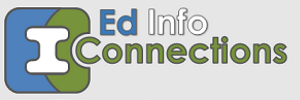Across the nation educators and their technologists have been working to implement what is a seemingly simple information systems enhancement: linking the records for teachers with the records for students. This should seem to involve a matt of linking two different computer applications; a matter for programmers over a weekend. Linking teacher and student records should seem to be a matter for a couple of computer programmers on the weekend. Nothing could be further from the truth.
The states and districts working on this linkage today are confronting a number of very significant challenges to this information linkage. This linkage is the key to being able to reliably evaluate teachers based on the scores of their students. And, yet, there is no agreed upon way to do this. Some of the challenges that exist are:
- Data errors and omissions. This is a matter of good record keeping in the schools. This can be a major impediment to the valid use of the teacher-student data when the roster of students associated with a teacher has the wrong data. In the past, there were few incentives for this data to be correct so many districts have lax procedures for enforcing the integrity of the rosters. In addition, some schools could count students on rosters that didn’t attend certain classes to get funding for them.
- Student and teacher mobility. This is a fundamental condition of education. It occurs commonly as students, generally from challenged economic circumstances, leave one school and enter another during a school year. It also happens with teachers when teachers get sick, leave the profession, or are reassigned. It is likely that teacher mid-year mobility is more prevalent in high-poverty, high-challenge schools.
- Handling multiple teachers. There is no standardized way to do this. Some approaches involve assigning all teachers and other professionals full responsibility for the student. Another involves assigning weights for each professional’s contribution to the student’s education. Still another option involves assigning one teacher responsibility for a given student and assigning another status to the other teachers and professionals involved in education.
- Individual/virtual learning. When students work outside of a traditional classroom, perhaps in online programs or with self-study resources, the issue of assigning teacher responsibility becomes important. From a practical perspective, the student may be working more on their own than under a teacher, but it may be necessary to have some teacher of record for the student.
These are some of the issues that make the teacher-student linkage more involved than tying together a couple of database records. Depending upon the state involved the approach chosen may differ and the resources in terms of support professionals may vary. The impact on different quantitative uses for this information (ex: value-added models) may also vary.
In Ohio, for example, which is participating in a project to develop teacher-student data linkages (funded by the Gates Foundation), three different teacher-student links are planned:
- Assigned Teacher, which represents the teacher that is highly qualified and responsible for the student;
- Teacher(s) of Record, which is a weighted relationship to indicate the percentage of instructional responsibility a teacher has (ex: 70-30 split between classroom and special education teachers for partial inclusion); and
- Contributing Professional, for example a counselor or librarian, that has some connection to the student, but is not a teacher.
In the coming months and years, it is likely that different approaches will be experimented with and that they will be used with a variety of value-added approaches that use differing types of approaches to student and context variables to evaluate teacher contribution. These different approaches will likely carry significance for educators. In some cases, they may accentuate the management dimensions of some teachers in schools as discussed here.

Leave a Reply